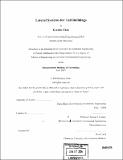Lateral systems for tall buildings
Author(s)
Chok, Kermin, 1980-
DownloadFull printable version (20.82Mb)
Other Contributors
Massachusetts Institute of Technology. Dept. of Civil and Environmental Engineering.
Advisor
Jerome J. Connor.
Terms of use
Metadata
Show full item recordAbstract
The advances in three-dimensional structural analysis and computing resources have allowed the efficient and safe design of increasingly taller structures. These structures are the consequence of increasing urban densification and economic viability. The modern skyscraper has and will thus continue to feature prominently in the landscape of urban cities. The trend towards progressively taller structures has demanded a shift from the traditional strength based design approach of buildings to a focus on constraining the overall motion of the structure. Structural engineers have responded to this challenge of lateral control with a myriad of systems that achieve motion control while adhering to the overall architectural vision. An investigation was carried out to understand the behavior of the different lateral systems employed in today's skyscrapers. The investigation examined the structural behavior of the traditional moment frame, the braced frame, the braced frame with outriggers and finally the tubular structure. The advantages and disadvantages of all schemes were explored from both an architectural and structural efficiency standpoint. Prior to the computer modeling of each lateral system, each scheme was understood from an analytical standpoint to both verify computer results and to illustrate the importance of hand calculations. The study repeatedly illustrated that motion was the governing condition and this led to the proposal of an approach for the design of braced frames.
Description
Thesis (M. Eng.)--Massachusetts Institute of Technology, Dept. of Civil and Environmental Engineering, 2004. Includes bibliographical references.
Date issued
2004Department
Massachusetts Institute of Technology. Department of Civil and Environmental EngineeringPublisher
Massachusetts Institute of Technology
Keywords
Civil and Environmental Engineering.